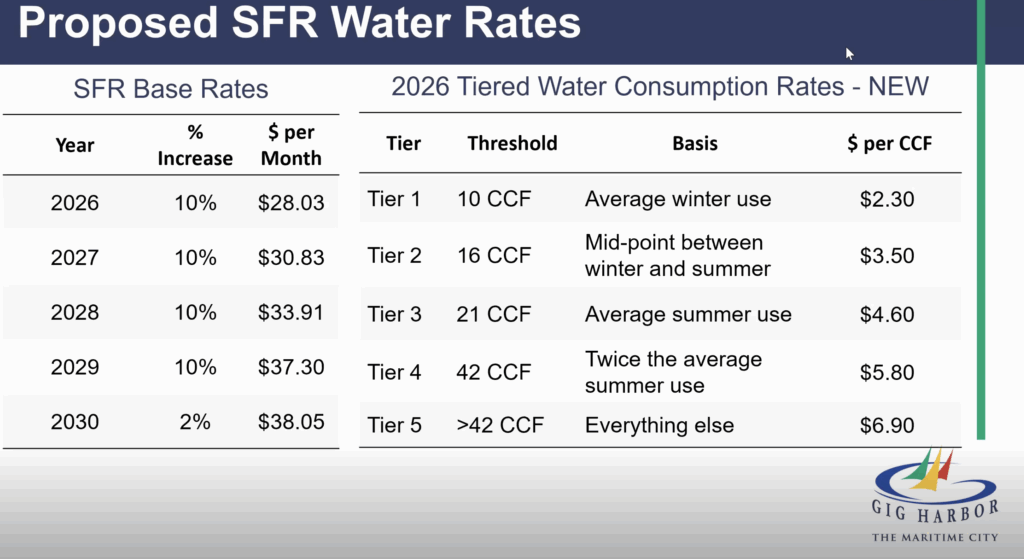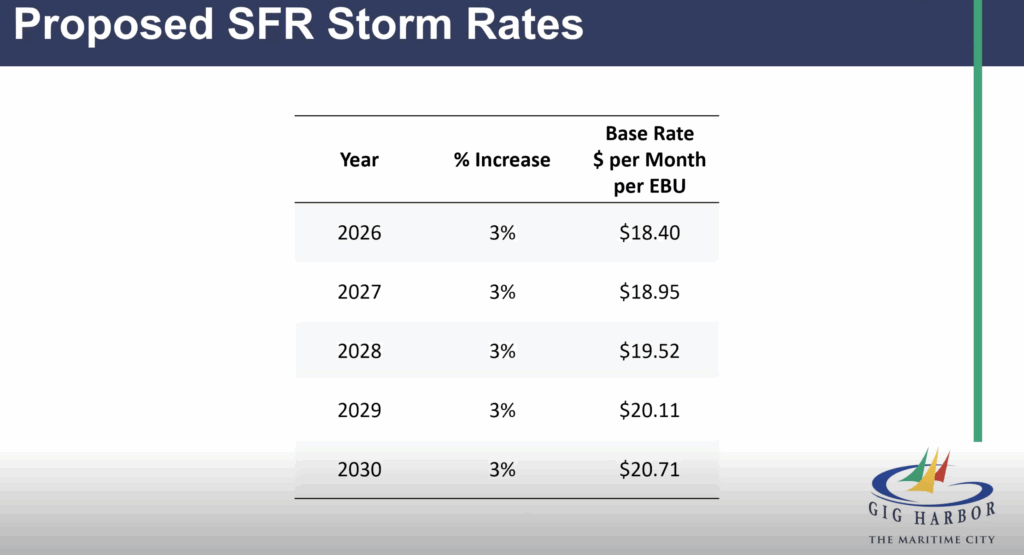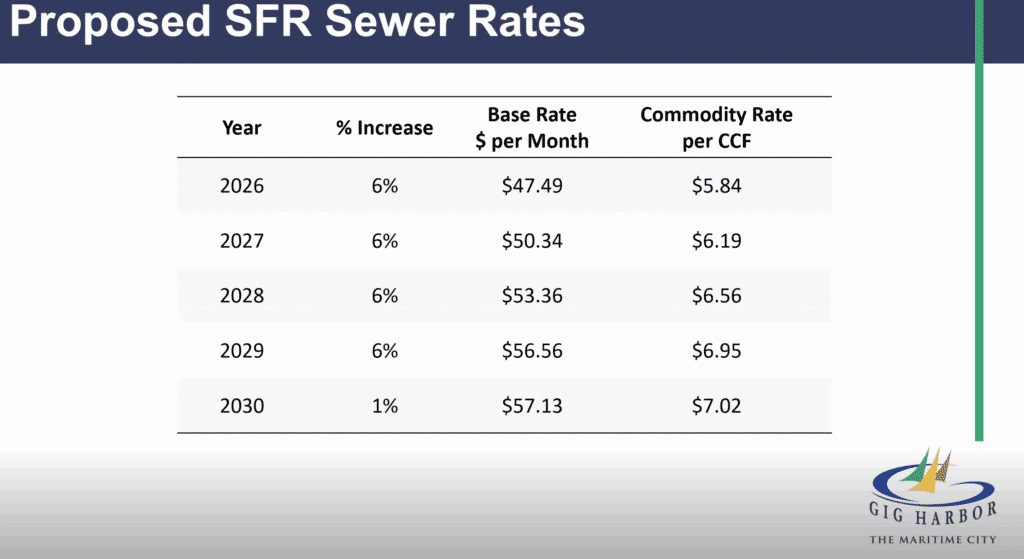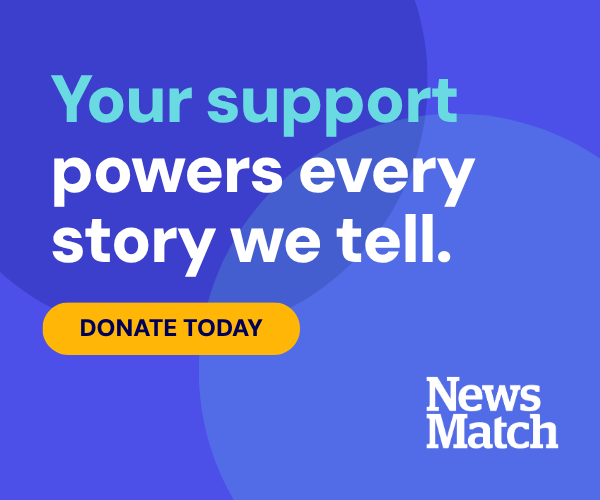Community Government
City considering increase in utility rates for next five years
The city of Gig Harbor is considering increasing utility rates over the next five years to account for increases in cost of services and to pay for capital projects related to those utilities.
The City Council is also considering implementing tiered water rates to encourage conservation and so that households that don’t use much water won’t have to pay as much as those that use more water.
City leaders have discussed possibly increasing utility rates since July. The council most recently took up these proposed changes at its Oct. 27 meeting, when Public Works Director Jeff Langhelm provided an overview of water, sewer and stormwater rate increases.
Nobody seconded motion
However, the motion to approve the ordinance increasing those rates did not receive a second. The council will reconsider the ordinance at its Nov. 10 meeting. If the council approves the ordinance, the rate increases will begin on Jan. 1, 2026.
During public comment, Gig Harbor resident Lynn Stevenson said she is concerned that, despite open houses about the rate increases, most of the public doesn’t know about the rate increases. She asked whether it must begin on the first day of the new year.
“These bills feel really fat when we get them,” she said. “Is there time for more public outreach? For example, I was thinking … the city has an open house and people can bring their bills and talk about how this affects them specifically. I think that’d be helpful because I think otherwise you’re going to expect a lot of backlash that’s completely a moot point at that time.”
Water
Langhelm said that the starting base rate for city water customers would be $28.03 per month in 2026. The rate would increase by 10% every year. He also shared five tiers of water users, starting at a threshold of 10 CCF (centum cubic feet) and going up to more than 42 CCF.
To avoid blindsiding Gig Harborites, Langhelm said the department has updated its utility rates webpage, and it may create an online sample bill to help customers see what the rate increases would look like. Councilmember Roger Henderson said that even though it might be “a little old-fashioned,” the department could consider sending a physical mailer, in the event people don’t check the webpage.

Proposed city of Gig Harbor water rate increases.
Councilmember Jeni Woock also said posting information about capital projects on its website might help customers understand what the increase will pay for, such as handling iron and manganese in the water supply through a new water treatment system.
“Something that our community is really mindful about these days is the color of their water,” she said. “And so if they knew that some of this money was being kept aside to spend on capital projects, such as that, it might help explain a little bit better about the costs.”
Stormwater
Stormwater base rates would increase by 3% every year. “These are less complicated by far than water,” Langhelm said, and are the “lowest of everybody around us, even with the increase.”

Proposed city of Gig Harbor stormwater rate increases.
“We pay for water quality treatment (and) we currently have a lot of untreated stormwater runoff in our city,” Langhelm said. “We are in the process of continuing to take existing untreated systems and expanding those and creating … some treatment systems. But also, because we don’t have a lot of treatment, [it] requires us to do a lot more maintenance because … everything just goes right into our storm system untreated. The city is also pursuing multiple culvert replacement projects to address and improve fish passage throughout town.”
He also highlighted that the city has to deal with “a lot of illicit discharges” of stormwater, which city code requires, as well as reviewing private development projects and performing routine inspections.
He also noted a fun side to stormwater: The city’s National Pollutant Discharge Elimination System (NPDES) Coordinator, Michael Abboud, “has been successful with having some of our storm drains painted with some very creative artwork.”
“So if you see those around town,” he continued, “we’ve talked about playing a little game with those to see if you can complete a bingo card or something.”
Sewer
Sewer rates will increase by 6% every year, except for 2030, when they will increase by just 1%. In 2026, the starting sewer base rate would be $47.49 per month.
“The sewer utility highlights include multiple lift station upgrades,” Langhelm said. “Currently, we have four in process due to equipment being old, outdated, and not being able to acquire equipment to replace them anymore.”

Proposed city of Gig Harbor sewer rate increases.
The city is also performing nutrient improvements at its wastewater treatment plant, per new state permitting requirements regarding nutrient reduction in treated wastewater. Nutrients like nitrogen and phosphorus in wastewater can cause harmful blooms of toxic algae that can cause stomach and liver problems, rashes, and have overall detrimental neurological effects. They also wreak havoc on the environment, and sicken and suffocate aquatic life.
“Also for the sewer utility, we have to address illicit discharge — storm drains connected to our sewer system — but we also have to deal with fats, oil, and grease and … eliminate [them] out of our system because otherwise, they cost us even more time and money to perform lift station maintenance,” Langhelm said. “And then we just have the general overall computer system that controls our sewer utility, similar to water, and then all the treatment plant chemicals that are used and the electrical costs and the wear and tear items. So those are all included in our utility expenses.”
He also highlighted that the city offers bill assistance for elders, people with disabilities, and low-income households, and that the city also works closely with Fish Food Bank to offer utility support.

